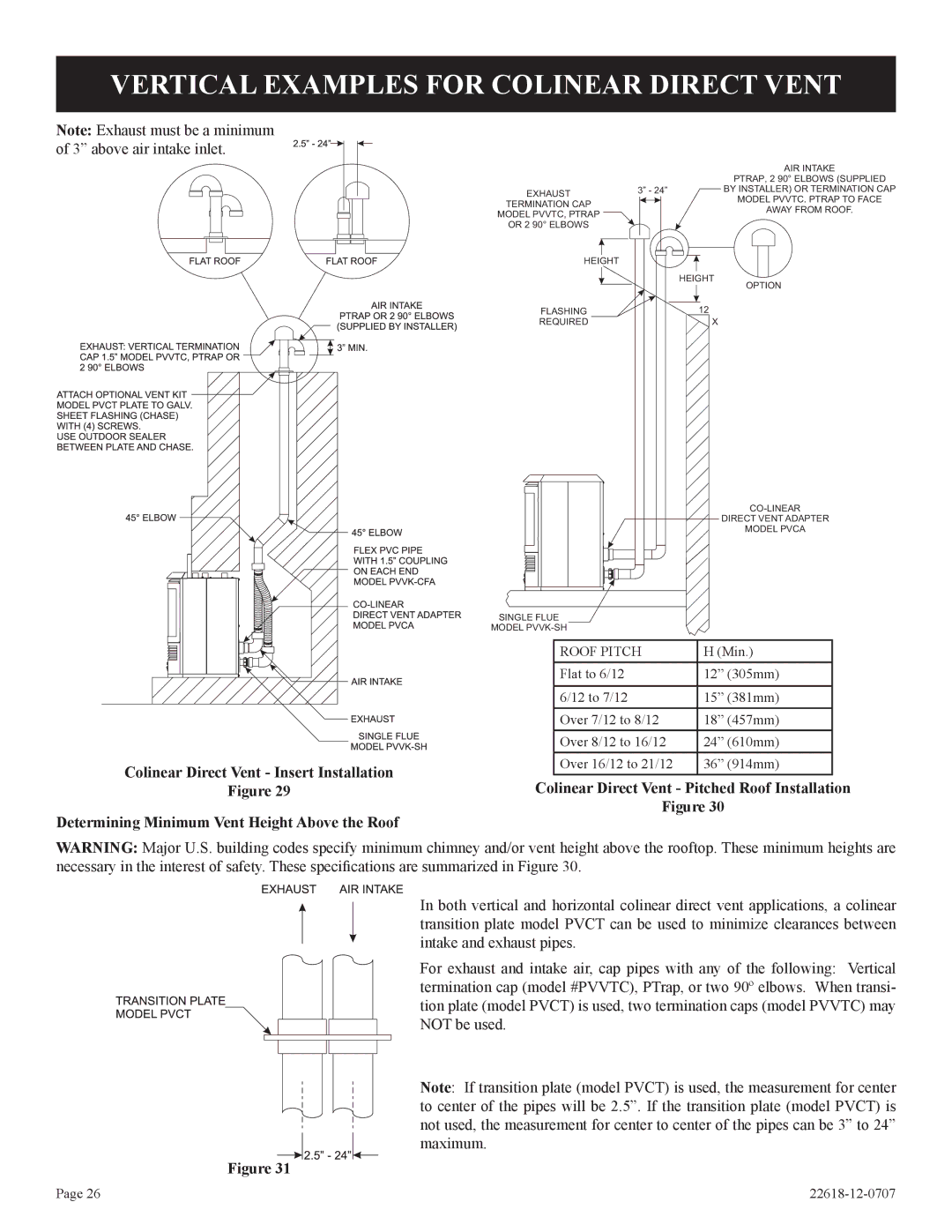
VERTICAL EXAMPLES FOR COLINEAR DIRECT VENT
Note: Exhaust must be a minimum of 3” above air intake inlet.
EXHAUST
TERMINATION CAP
MODEL PVVTC, PTRAP
OR 2 90° ELBOWS
HEIGHT
FLASHING
REQUIRED
SINGLE FLUE
MODEL
AIR INTAKE
PTRAP, 2 90° ELBOWS (SUPPLIED
3” - 24”BY INSTALLER) OR TERMINATION CAP ![]()
![]() MODEL PVVTC. PTRAP TO FACE
MODEL PVVTC. PTRAP TO FACE
AWAY FROM ROOF.
HEIGHT
OPTION
12
X
DIRECT VENT ADAPTER
MODEL PVCA
Colinear Direct Vent - Insert Installation
Figure 29
Determining Minimum Vent Height Above the Roof
ROOF PITCH | H (Min.) |
Flat to 6/12 | 12” (305mm) |
|
|
6/12 to 7/12 | 15” (381mm) |
Over 7/12 to 8/12 | 18” (457mm) |
Over 8/12 to 16/12 | 24” (610mm) |
Over 16/12 to 21/12 | 36” (914mm) |
Colinear Direct Vent - Pitched Roof Installation
Figure 30
WARNING: Major U.S. building codes specify minimum chimney and/or vent height above the rooftop. These minimum heights are necessary in the interest of safety. These specifications are summarized in Figure 30.
Figure 31
In both vertical and horizontal colinear direct vent applications, a colinear transition plate model PVCT can be used to minimize clearances between intake and exhaust pipes.
For exhaust and intake air, cap pipes with any of the following: Vertical termination cap (model #PVVTC), PTrap, or two 90º elbows. When transi- tion plate (model PVCT) is used, two termination caps (model PVVTC) may NOT be used.
Note: If transition plate (model PVCT) is used, the measurement for center to center of the pipes will be 2.5”. If the transition plate (model PVCT) is not used, the measurement for center to center of the pipes can be 3” to 24” maximum.
Page 26 |
